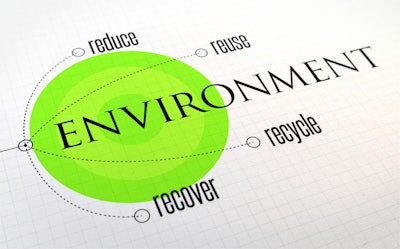
National environmental organization UPSTREAM has released a discussion paper, “Advancing Local Government’s Interests through Extended Producer Responsibility for Packaging,” that provides results of a six-month policy dialogue among local government recycling experts, which UPSTREAM convened and facilitated from May through October 2014. The paper has been released for a 30-day comment period.
“This paper raises issues that product stewardship advocates will have to grapple with in order to expand EPR in the U.S. beyond the short—but important—list of hazardous and hard-to-handle materials that got things started,” says Dick Lilly, Business Manager for Waste and Prevention and Product Stewardship for the City of Seattle, and dialogue participant.
EPR is a policy framework designed to increase the recycling of products and packaging by shifting funding and sometimes program management from local governments, taxpayers, and ratepayers to the producers of products and packaging and their consumers. According to UPSTREAM, this approach ensures that the costs of end-of-use management are born by producers and consumers, rather than externalized onto society as a whole. The environmental management of the product and its package become part of the costs of doing business, like R&D, marketing, and logistics.
In order to apply EPR policies effectively to meet the challenges of improving packaging design and increasing recycling in the U.S., UPSTREAM says it is necessary to identify and resolve the issues in the interface between producers and local governments, which operate solid waste recovery systems directly or through contractors.
“Most citizens just want an easy, inexpensive way to recycle unwanted packaging,”says Sarah Hellekson, Transit & Solid Waste Manager for the City of Plymouth, MN. “Because local governments are so close to their citizens, they also want an easy, inexpensive, but also effective recycling program. The challenge is how to pay for it. EPR could help provide the necessary funding and systemic changes to take packaging design and recycling to the next level in the United States.”
The purpose of this paper is to:
- Identify key local government issues and concerns regarding EPR for packaging.
- Recommend processes for addressing potential local government issues with the establishment and implementation of EPR programs.
- Build a common understanding of the issues involved with a transition to producer-funded programs.
- Provide a platform for local governments to support and advocate for EPR for packaging programs that successfully advance their goals and interests.
Although the majority of local programs have been operating now for two decades or more, program efficiency and efficacy varies widely from one community to another. Nevertheless, expansion and improvement of recycling is often constrained by political forces and conflicting budget priorities, UPSTREAM explains. In virtually all communities, increased investment is needed to increase recycling—expenditures that will range from public education to capital improvements in materials recovery facilities.
“Local governments have played a key role to get recycling this far, and will want to have a strong voice as producers are tasked with bringing about significant recycling advancements,” states Sego Jackson, who coordinates with curbside recycling providers for Snohomish County, WA.
Notes UPSTREAM, although recycling in the U.S. and in individual states should ideally be approached from a system perspective to achieve optimization of material recovery, the disaggregated and constrained nature of local decision-making presents considerable obstacles. Still, as current stewards of our nation’s recycling programs, the transition to EPR for packaging requires that local governments play integral roles in developing and implementing policies to ensure net benefits to the communities they serve.
“Potential reasons why local governments will be interested in this approach include the opportunities for higher performance, higher service-orientation, decreased government administration and costs, potentially lower and more equitable tax and ratepayer burdens on their citizens, and significant environmental benefits through increased recycling and better packaging design,” says Matt Prindiville, Associate Director for UPSTREAM and dialogue facilitator.






















